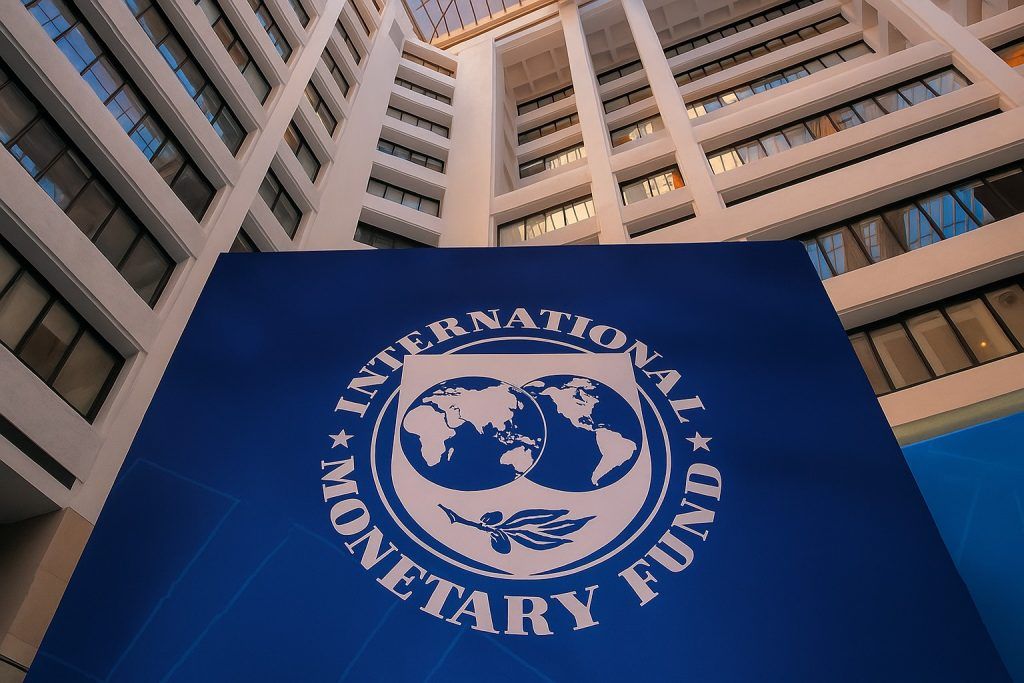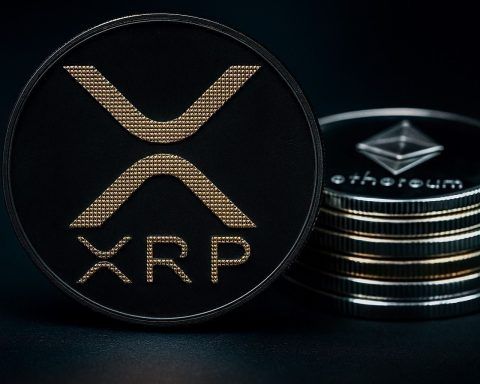- New rules, more liquidity. Hong Kong’s securities watchdog will let licensed crypto exchanges in the city share global order books with their overseas affiliates—aimed squarely at improving liquidity and price discovery. The move was unveiled during Hong Kong FinTech Week (Nov. 3–4). [1]
- Product scope expands. The SFC also set out measures to let platforms distribute more tokens (including certain Hong Kong‑regulated stablecoins for professional investors) and explicitly support digital securities/tokenized assets under safeguards. [2]
- HashKey’s big week. On Nov. 4, HashKey launched “Crypto‑as‑a‑Service (CaaS)” to help banks and fintechs plug into Web3 using HashKey Chain and licensed infrastructure; on Nov. 5 it announced a strategic partnership with Kraken to accelerate institutional tokenization. [3]
- IPO watch. HashKey has confidentially filed for a Hong Kong IPO reportedly up to US$500 million, per Bloomberg‑based reports and local trade media; the company has not yet published a prospectus. [4]
- Stablecoin regime live. Hong Kong’s Stablecoins Ordinance took effect on Aug. 1, 2025; issuing fiat‑referenced stablecoins now requires a licence. No issuer has been licensed yet. [5]
- Market snapshot (approx., at time of writing).Bitcoin ~$101,608 (‑2.19%); Ether ~$3,287 (‑5.9%); Coinbase (COIN) $307.32 (‑7.0%); OSL Group (0863.HK) ~HK$16.01 (‑4.1%). Prices move; check live feeds if trading. [6]
The in‑depth story
A policy pivot to unlock liquidity
Hong Kong’s Securities and Futures Commission (SFC) has taken its most market‑opening step since launching a full licensing regime for virtual‑asset trading platforms (VATPs): allowing licensed exchanges to link local order books to their overseas affiliates. SFC chief executive Julia Leung framed it as part of a “multi‑pronged” plan to integrate with global liquidity while preserving safeguards—delivery‑versus‑payment, prefunding at overseas VATPs, a Hong Kong reserve fund for compensation, and joint surveillance. [7]
Leung said the circular issued during FinTech Week would “enable licensed VATPs to share a global order book with their overseas affiliated VATPs,” strengthening price discovery and institutional depth. [8]
Reuters’ event coverage underscores the goal: boosting Hong Kong’s fintech‑hub status with access to global liquidity and a tokenization pilot under a longer‑term “Fintech 2030” roadmap. [9]
More products, clearer pathways
Alongside access, the SFC indicated VATPs can distribute more digital assets (including certain HKMA‑regulated stablecoins for professional investors) and support digital securities—a nod to tokenized funds, bonds and equity. The regulator also previewed next steps to connect brokers to overseas liquidity under its ASPIRe roadmap. [10]
This lands atop Hong Kong’s Stablecoins Ordinance, in force since Aug. 1: issuance of fiat‑referenced stablecoins now needs an HKMA licence, though no issuer is yet approved. That constraint matters for retail distribution, but the direction of travel is clear. [11]
HashKey’s week: from infrastructure to distribution
Against this policy backdrop, HashKey used FinTech Week to roll out Crypto‑as‑a‑Service (CaaS)—a plug‑and‑play stack combining licensed liquidity, custody, an on‑chain AML module and HashKey Chain (an Ethereum L2) so banks and fintechs can launch tokenization and digital‑asset products without building core crypto infrastructure in‑house. “CaaS is a bridge between traditional finance and the crypto world,” said Leo Li, who leads HashKey’s on‑chain business. [12]
One day later, HashKey and Kraken unveiled a strategic partnership to push institutional tokenization across Asia‑Pacific—coordinating go‑to‑market for institutional‑grade on‑chain products, developer and regulatory engagement, and joint marketing. “This strategic partnership opens the door to significant opportunities in digital finance,” said Dr. Xiao Feng, HashKey’s chairman and CEO. Kraken co‑CEO Arjun Sethi called tokenization “a major evolution in market infrastructure.” [13]
The narrative fits what fintech insiders are calling crypto’s “SaaS moment”: instead of everyone building everything, CaaS providers offer APIs, white‑label wallets, custody and tokenization rails so banks and fintechs can ship in days or weeks. [14]
IPO watch: a regulated exchange tests Hong Kong’s equity market
Multiple reports say HashKey has confidentially filed for a Hong Kong IPO that could raise as much as US$500 million, making it a high‑profile test of public‑market appetite for licensed crypto‑market infrastructure. (No prospectus filed publicly yet; timing will hinge on conditions.) [15]
Market reaction and prices
- Bitcoin (BTC): ~$101,608, down about 2.2% on the session at press time. Macro drivers (rates, ETF flows) still dominate, but liquidity access in a major hub is structurally supportive.
- Ether (ETH): ~$3,287, down ~5.9%. Tokenization narratives often track ETH given its role in settlement and custody tooling.
- Coinbase (COIN): ~$307.32, off ~7.0% as U.S. crypto‑exposed equities trade with beta to BTC/ETH. Longer‑term, more regulated venues in Asia can expand institutional flow and listings, indirectly benefiting global primes and custodians.
- OSL Group (0863.HK): ~HK$16.01 (‑4.1%). As one of Hong Kong’s listed, licensed platforms, OSL is often traded as a local proxy for Web3 policy momentum and volumes. [16]
What changes on the ground?
Liquidity & spreads. Shared order books should tighten spreads and deepen depth, particularly for higher‑cap tokens. The SFC insists on prefunding, DvP and joint surveillance to keep settlement and integrity risks in check. [17]
Product breadth. Allowing digital securities and easing track‑record rules (for certain regulated tokens/stablecoins sold to professional investors) paves the way for tokenized funds, bonds and RWAs to list on licensed venues—directly relevant to HashKey’s CaaS pitch. [18]
Ecosystem signaling. FinTech Week’s main conference wrapped on Nov. 4, and the policy cadence underscores a coordinated, cross‑agency effort to re‑establish Hong Kong as a regulated Web3 hub. [19]
3‑scenario outlook (6–12 months)
Base case (55%) — “Gradual deepening.”
- Volumes on licensed Hong Kong VATPs rise as global‑book connectivity rolls out; tokenized money‑market funds and structured notes gain traction with professional investors.
- BTC trades in a wide US$85k–$130k range with macro swings; ETH benefits from tokenization flow narratives.
- OSL (0863.HK) tracks local volume growth; COIN remains leveraged to U.S. ETF flows and derivatives mix. [20]
Bull case (25%) — “Listing + liquidity flywheel.”
- HashKey prices its IPO into a receptive market, validating licensed‑venue economics; tokenized securities and HKD‑stablecoin pilots accelerate.
- BTC challenges prior highs as institutional participation widens; ETH outperforms on settlement/custody demand; OSL and regional peers rerate on volume/fee tailwinds. [21]
Bear case (20%) — “Macro and onboarding friction.”
- Global risk‑off (rates, geopolitics) suppresses crypto prices; operational frictions slow global‑book rollout; stablecoin licensing stays thin.
- BTC revisits the high‑$70ks; ETH lags; COIN/OSL trade with crypto beta; tokenization revenues arrive slower than hoped. [22]
(This is not investment advice. Scenarios are illustrative and depend on policy timing, market volatility and execution.)
What to watch next
- SFC implementation milestones (global‑book technical cutover, broker connectivity; product approval cadence for tokenized securities). [23]
- HKMA stablecoin licensing—first approvals (if any) and portfolio use‑cases; interaction with bank distribution. [24]
- HashKey disclosures—any formal IPO filings/sponsors, CaaS client wins, and early metrics (volumes, custody AUM). [25]
- Cross‑exchange partnerships like HashKey–Kraken translating into listed tokenized products and institutional flows. [26]
Expert and official voices
- Julia Leung (SFC): the new circular will “enable licensed VATPs to share a global order book with their overseas affiliated VATPs.” [27]
- Leo Li (HashKey):“CaaS is a bridge between traditional finance and the crypto world.” [28]
- Dr. Xiao Feng (HashKey):“This strategic partnership opens the door to significant opportunities in digital finance.” [29]
- Arjun Sethi (Kraken):“The tokenization of financial products represents a major evolution in market infrastructure.” [30]
- Industry framing:“Crypto‑as‑a‑Service (CaaS) represents the ‘SaaS moment’ for the blockchain industry.” [31]
Sources & further reading
- Policy & official: SFC FinTech Week synopsis and safeguards; Hong Kong FinTech Week (Gov’t); HKMA stablecoin regime. [32]
- News on rule changes: Reuters/Refinitiv coverage of global order book access and tokenization pilot. [33]
- HashKey announcements: CaaS launch (Nov. 4); HashKey–Kraken partnership (Nov. 5). [34]
- IPO reporting: Bloomberg via Yahoo Finance; FintechNews Hong Kong; The Standard. [35]
- Context & commentary: Bitget’s FinTech Week roundup; industry explainer on CaaS. [36]
- Prices at publication: BTC, ETH, COIN; OSL Group (0863.HK). [37]
Note: Markets are volatile; prices are indicative at publication time.
References
1. www.reuters.com, 2. www.sfc.hk, 3. group.hashkey.com, 4. finance.yahoo.com, 5. www.hkma.gov.hk, 6. www.reuters.com, 7. www.sfc.hk, 8. www.sfc.hk, 9. www.reuters.com, 10. www.sfc.hk, 11. www.hkma.gov.hk, 12. group.hashkey.com, 13. group.hashkey.com, 14. news.futunn.com, 15. finance.yahoo.com, 16. www.reuters.com, 17. www.sfc.hk, 18. www.sfc.hk, 19. www.info.gov.hk, 20. www.reuters.com, 21. finance.yahoo.com, 22. www.hkma.gov.hk, 23. www.sfc.hk, 24. www.hkma.gov.hk, 25. finance.yahoo.com, 26. group.hashkey.com, 27. www.sfc.hk, 28. group.hashkey.com, 29. group.hashkey.com, 30. group.hashkey.com, 31. news.futunn.com, 32. www.sfc.hk, 33. www.reuters.com, 34. group.hashkey.com, 35. finance.yahoo.com, 36. www.bitget.com, 37. www.reuters.com










